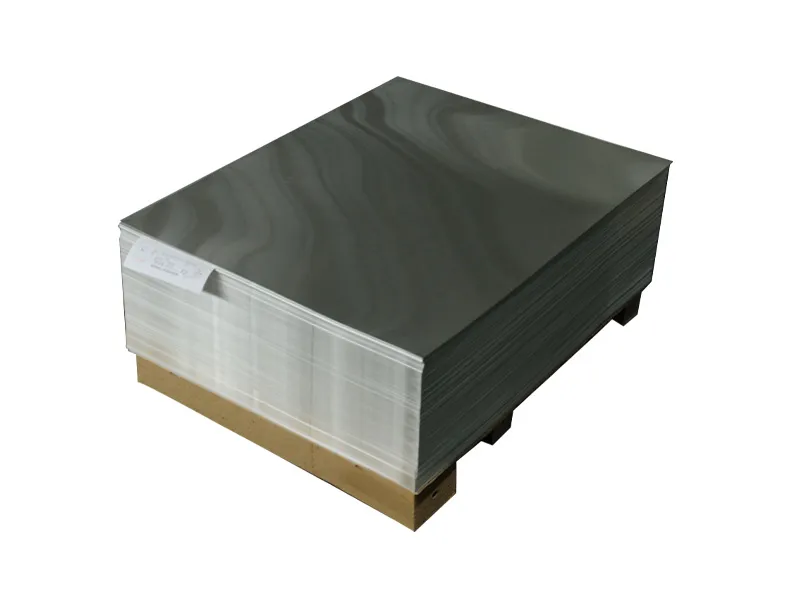2025-06-23 06:55:09
From the shimmering, fluid curves of a landmark cultural center to the crisp, minimalist lines of a contemporary skyscraper, aluminum sheet has become one of the most defining materials of modern and contemporary architecture. More than just a functional metal, aluminum has provided architects with a versatile and expressive medium to realize ambitious designs that were previously unimaginable.
Aluminum sheet has become a highly popular material in modern architecture due to its unique combination of aesthetic versatility, structural properties, and sustainability.

Facades and Cladding: This is one of the most common applications. Aluminum panels, including aluminum composite materials (ACM) and perforated sheets, are extensively used for exterior walls, providing a sleek, modern appearance and protection against weather. They can be customized with various finishes, colors, and patterns.
Roofing Systems: Lightweight and corrosion-resistant, aluminum is an excellent choice for both residential and commercial roofing, including standing seam systems and shingles. Its reflective properties also contribute to energy efficiency by reducing heat absorption.
Windows and Doors: Aluminum is widely used for window and door frames due to its strength, durability, and ability to support large glass panels. Modern aluminum window frames often incorporate thermal breaks for improved energy efficiency.
Curtain Walls: As non-structural exterior walls, curtain walls frequently utilize aluminum for their framing, allowing for large, transparent surfaces that maximize natural light.
Sunshades and Screens: Perforated aluminum sheets are ideal for sunshades and screens, helping to control sunlight, reduce solar heat gain, and enhance energy efficiency while offering visual comfort and design flexibility.
Balustrades and Railings: Aluminum provides a sturdy yet aesthetically pleasing solution for both interior and exterior balustrades and railings, with customizable patterns and finishes.
Ceilings and Canopies: Aluminum sheets are used for interior ceilings and exterior canopies, offering acoustic benefits, visual appeal, and durability.
Interior Design Elements: Beyond exterior applications, aluminum is incorporated into interior designs for partitions, decorative wall panels, room dividers, and even furniture, adding texture, visual interest, and a sense of space and light.
Smart Facades: Aluminum facades can be integrated with dynamic shading systems, photovoltaic panels, and sensors to respond to environmental conditions and optimize building performance.
3D-Printed Components: Advances in 3D printing allow for intricate and custom-designed aluminum components, opening new possibilities for architectural creativity.
Lightweight and Strong: Aluminum is about one-third the weight of steel, making it easier to transport, handle, and install, which reduces labor costs and structural load on the building. Despite its lightness, it boasts an excellent strength-to-weight ratio, allowing for large spans and resilient structures.
Corrosion Resistance: Aluminum naturally forms a protective oxide layer when exposed to air, providing excellent resistance to rust and corrosion. This makes it ideal for outdoor applications, even in harsh or coastal environments, ensuring long-lasting performance and minimal maintenance.
Design Versatility and Malleability: Aluminum can be easily formed, fabricated, cut, bent, shaped, and manipulated into various forms, sizes, patterns, and intricate designs. It is available in a wide array of finishes (e.g., brushed, anodized, powder-coated, painted) and colors, allowing architects to achieve diverse aesthetic effects and match specific design preferences. Perforation and embossing add further design possibilities.
Durability and Longevity: Aluminum is highly durable and can withstand extreme weather conditions, UV radiation, and temperature fluctuations without losing its integrity or appearance over time, leading to a long lifespan for architectural elements.

Sustainability and Recyclability: Aluminum is 100% recyclable without any loss of quality, making it an environmentally friendly choice. Recycling aluminum requires significantly less energy than producing new material, reducing the carbon footprint of construction projects. This aligns with green building principles and can contribute to LEED certification.
Energy Efficiency: Aluminum's reflective properties can help reduce heat absorption, contributing to better temperature regulation inside buildings. When combined with thermal breaks or rainscreen systems, it enhances insulation and reduces heating and cooling costs.
Low Maintenance: Due to its resistance to corrosion and ability to retain its color and appearance, aluminum cladding and other applications require minimal ongoing maintenance, such as repainting or resealing.
In conclusion, aluminum sheet is far more than a simple building material. It is a catalyst for innovation—a lightweight, durable, and endlessly formable canvas that has empowered architects to redefine the relationship between form, function, and façade. Its ability to be sleekly minimalist one moment and sculpturally expressive the next, all while offering superior performance and sustainability, ensures its place as a cornerstone of modern architectural practice.